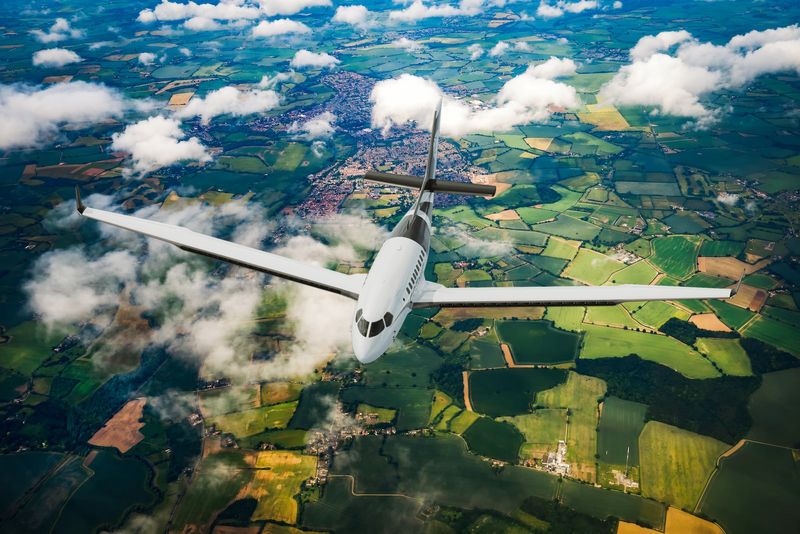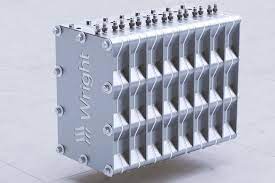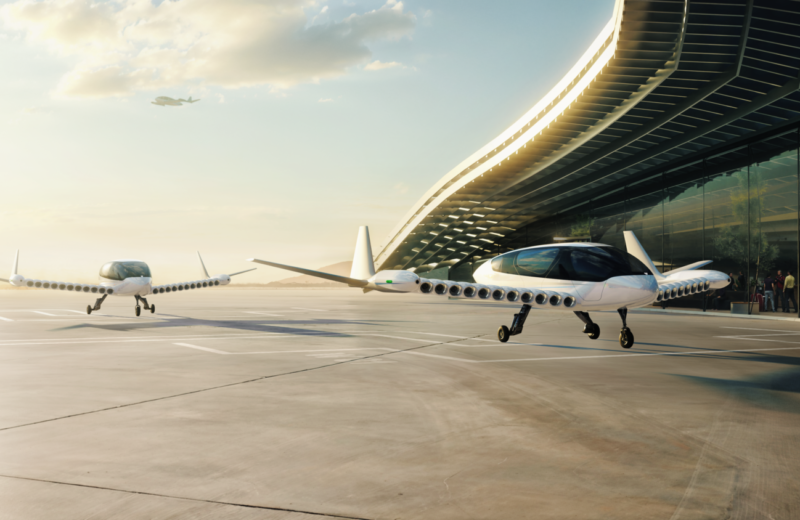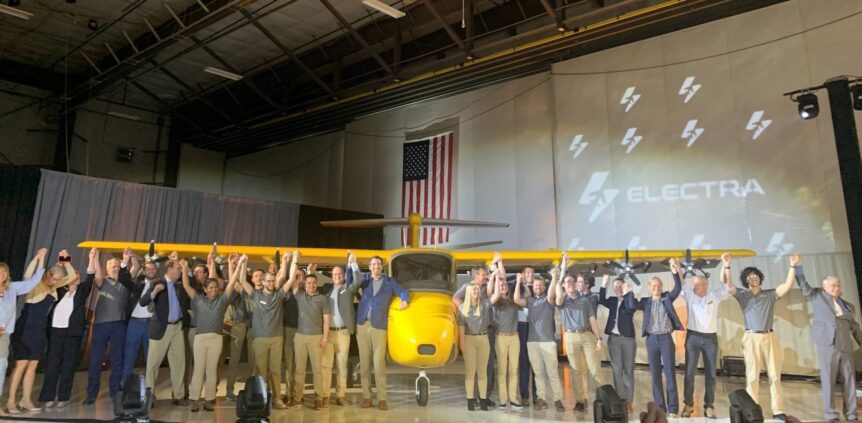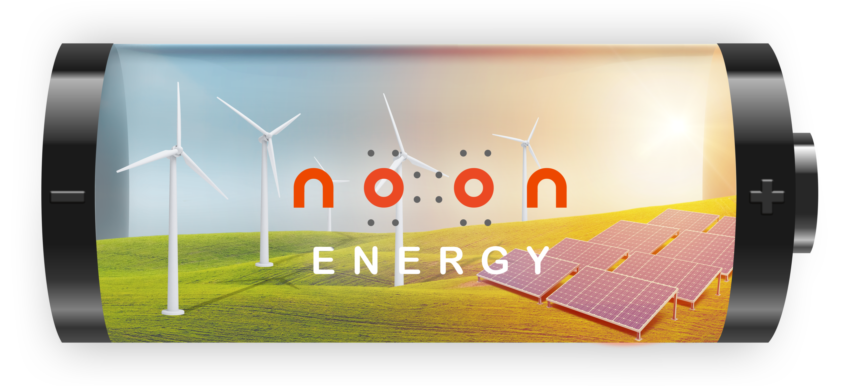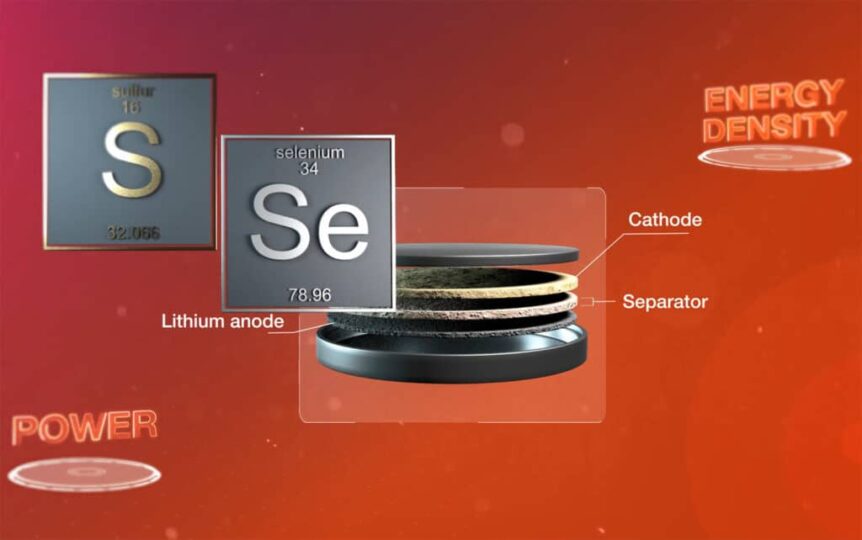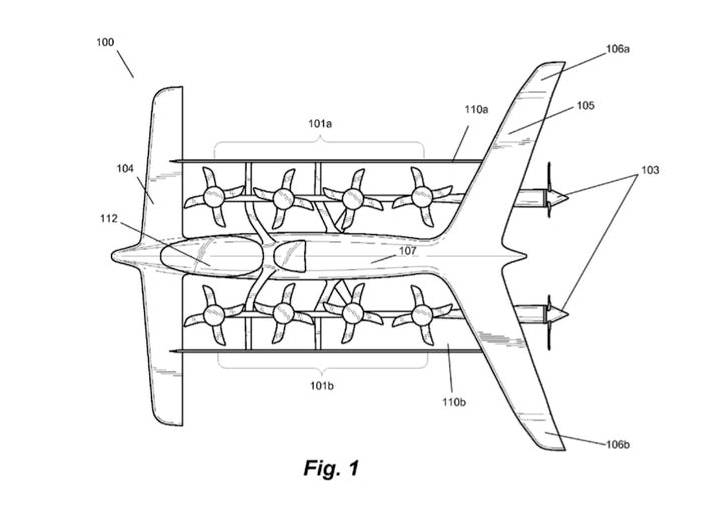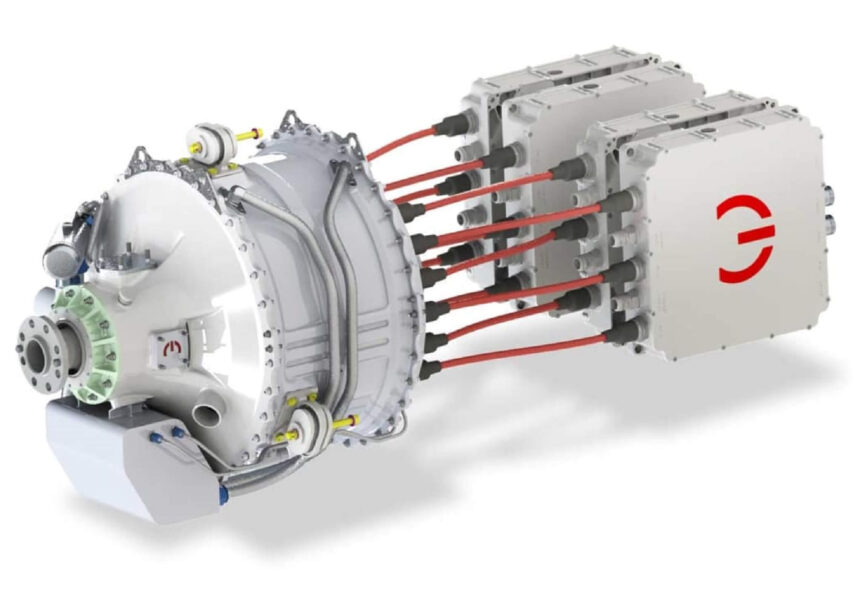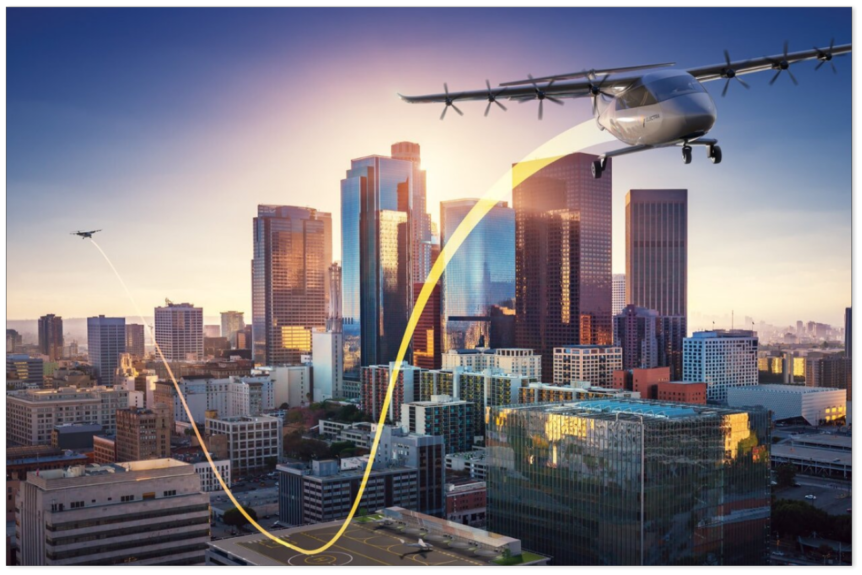32 Motors across a long Wing Cosmic Aerospace has announced a different kind of “blown wing,” hiding 32 specially developed electric turbines across the inner span of a high-aspect-ratio wing. Cosmic will attempt to achieve jet-like speeds at half the cost of fossil-fuel or sustainable aviation fuel (SAF) powered jet. Electric-flight.eu notes the American-Belgian firm was founded by “graduates of Boom Supersonic, NASA, Oxford and Kittyhawk,” a broad spectrum of talent. Part of that team is creating a fully-electric “jet engine,” currently under test at Limburg Regional Airport in Belgium. The motors will be fed by packs of 360-Watt-hour per kilogram batteries, achievable with today’s technology. This enables up to 1,000 kilometer (600 mile) range for a long-winged craft carrying 24 passengers. “Unlike other startups in the field, which are mostly focused on sustainable jet fuels, hydrogen, and battery tech, Cosmic has focused its engineering efforts on better propulsion systems and a unique air frame design, CEO Christopher Chahine told …
The Wright Battery Program
Jeff Engler of Wright Electric wants it all. He wants lightweight, high-power electric motors and inverters to control them. He wants lightweight generators and now lightweight, high energy density batteries to store that electricity. He wants to meet the goal that, “By 2040, Wright will eliminate carbon emissions from all flights under 800 miles.” A more recent iteration of the company’s web site includes the goal of “Decarbonizing the industries that are hardest to decarbonize.” These would seem heady ideals but Wright Electric seems to be making steady progress toward fulfilling those goals. The Motor Their motor has been tested to 1,000 kilowatts (1,340 horsepower), with expectations that it could reach 2,000 kW (2,680 hp.). According to Aviation Week, “The motor produced 1 megawatt of peak power on a dynamometer test stand at Wright’s facility in Albany, New York. The company has signed a Space Act Agreement with NASA to test the motor in an altitude chamber at the NASA …
Whisper Jet Unveiled
Mark Moore had a long career at NASA, followed by his leadership of Uber Elevate, the car-sharing service’s attempt to emulate their terrestrial cab competition in a more skyward realm. Moore left all that behind to form his own company, Whisper Aero, which recently unveiled its Whisper Jet electric ducted fan propulsor. “Whisper” is more than just a trade name here. Moore and his team have created an electric ducted fan propulsion system that seems to be far quieter than anything else flying. Whisper Aero plans to supply these systems to airframe manufacturers, but not to produce any aircraft itself. What’s All the Noise About? Moore works from the standpoint that reducing noise is paramount in gaining community acceptance of AAM (Advanced Air Mobility)* machines. If Mark is correct in his assessments, which seem borne out by recent tests, his ultra-quiet propulsors should be a big part of future urban and regional flight. One dictum of propeller design is that …
Electra Rolls Out a Full-size Demonstrator
Starting small, Electra Aero has rolled out a two-seat demonstrator of its multi-motor, blown-lift technology. Bright yellow, the EL-2 “Goldfinch” celebrates “the beloved, nimble American Goldfinch bird indigenous to North America,” according to the company. Its full-scale production aircraft will carry nine. John S. Langford, Founder and CEO of Electra.aero explains, “In the three years since we founded Electra, we’ve designed our eSTOL aircraft, validated our blown lift technology with a sub-scale demonstrator, and run a fully integrated test of our 150-kilowatt hybrid-electric generator at full scale. Now we’re ready to test the entire system with this technology demonstrator aircraft. We can’t wait to fly this plane and show the world what our eSTOL aircraft can do.” Chris Courtin, Chief Engineer on the technology demonstrator project, explains the ambitious aircraft, a two-seat version of which will fly this year. Electra notes its “proprietary blown lift technology uses eight motors to provide additional wing lift, and hybrid-electric power that provides internal …
Carbon and Oxygen and Dirt Cheap Batteries
Carbon and oxygen comprise a big part of the universe, and are essential to life on earth. They may also be the answer for long-term energy storage in a promising battery development from Noon Energy. “100 hours of storage at one-tenth the cost of lithium-ion batteries for long-duration storage.” It started on Mars According to Electrek, “Chris Graves, Noon Energy’s founder and CEO launched the company in 2018 After helping to develop NASA’s Mars Perseverance rover MOXIE device, which produces oxygen from the Martian carbon dioxide atmosphere.” According to TechCrunch, “The device sucks in carbon dioxide and strips off an oxygen atom, which it stores on board. The remaining carbon monoxide is exhausted into the thin Martian atmosphere. MOXIE, by the way, is an acronym for “Mars Oxygen ISRU Experiment. ISRU is another acronym, In Situ Resource Utilization,” or on-site use of available resources. MOXIE was also the name of an early carbonated soft drink or energy beverage. On Mars, MOXIE …
SABERS – Solid State Batteries Designed for Aircraft
SABERS (Solid-state Architecture Batteries for Enhanced Rechargeability and Safety) is NASA’s approach to making batteries lighter, safer, hold more energy, and (we hope) be ready soon for flight. In fact, SABERS batteries are intended specifically to meet the challenges of aircraft applications. NASA TV reports, “Instead of housing each battery cell inside its own steel casing, as liquid batteries do, all the cells in SABERS battery can be stacked vertically inside one casing. SABERS can do 500 Watt-hours per kilogram, double that of an electric car.” Rocco P. Viggiano, one of the program’s researchers, explains, “Not only does this design eliminate 30 to 40 percent of the battery’s weight, it allows us to double or even triple the energy it can store, far exceeding the capabilities of lithium-ion batteries that are considered state of the art.” NASA points out, “Unlike liquid batteries, solid-state batteries do not catch fire when they malfunction and can still operate when damaged, making them attractive …
Kittyhawk to Close Doors, Open Another
While Eviation’s Alice is drawing adulation for its initial test flight, Kittyhawk, a one-time front-runner and pioneer is quietly closing down. A vision of Larry Page, Sebastian Thrun, and Ilan Kroo, Kittyhawk brought us several approaches to personal green flight, with a heavy emphasis on intuitive control and automated flight. One of its many approaches lives on, though, through sister company Wisk. Blooper Reel Kittyhawk’s earlier efforts look somewhat like an aeronautical blooper reel, one of those montages of early flying machines that evoke laughs when shown as preludes to more serious stuff in movie theaters. Kittyhawk, though, avoided crashes and humiliation. The firm explains its history: “Kittyhawk was founded in 2010 by autonomous car pioneer Sebastian Thrun with the backing of Google co-founder Larry Page to explore the frontier of then-new eVTOL aviation.” From Zee to Kittyhawk Originally founded as Zee Aviation, Kittyhawk was secretive, with only glimpses of its potential aerial vehicles surfacing as “spy shots.” The ZP-1 …
MagniX Ready for New Markets
MagniX, the motor company powering Eviation’s Alice and Harbour Air’s Beaver, is expanding into new markets. Already flying in a DeHavilland Beaver in Canada and being readied for flight on Eviation’s Alice in Arlington, Washington, the company’s motors have many potential airframes to grace. Besides Harbour Air and Eviation, English firm Faradair has chosen MagniX to power its BEHA, a triplane configuration commuter, and Sydney Seaplanes wants MagniX power for its Cessna Caravan Supplemental Type Certificate. On a grander scale, Universal Hydrogen will power its converted DeHavilland Dash 8s with MagniX. Even NASA has awarded funding to MagniX (along with General Electric) to develop “Electrified Aircraft Propulsion (EAP) technologies through ground and flight demonstrations. “ Harbour Air’s Beaver A 1957 de Havilland of Canada Beaver, C-FJOS, had its original Pratt & Whitney P-985 Wasp Junior radial piston engine replaced with a Magnix 750hp (559kW) Magni500 electric powerplant. It first flew on electric power on December 10, 2019. On August 19, …
Wright Electric’s 8-Year Plan
Jeffrey Engler has headed up Wright Electric for the last decade, working to provide efficient motors, inverters and overall power systems for airliners. Now, his firm is working to develop those airliners. From a startup in 2016, looking for a single-engine light aircraft to convert to hybrid power, Jeffrey has grown Wright to a recognized force in future flight. Presenting a mission statement and schedule for the next eight years, Wright has ambitious, but reasonable plans. Currently, Wright is testing a two megawatt motor and inverter, “Collaborating with NASA, U.S. Department of Energy, and U.S. Department of Defense.” Testing will continue through 2023. The firm predicts it will be flying its Wright Spirit between the busiest “city-pairs” in the world by 2026. The Spirit, a BAe 146 converted to electric power, will connect paired destination such as, “Seoul-Jeju, London-Paris, Rio de Janeiro-São Paulo, and San Francisco-Los Angeles.” “Wright’s goal is to make all single-aisle flights shorter than 800 miles zero-emissions,” …
Electra Attracts Customers, Investors and Landing Sites
Electra Aero has found worldwide interest in its electric ultra-short take-off and landing airplane, an eight-motor craft capable of taking off and landing across most jet-size runways. Producing such an aircraft takes great design, appropriately-designed landing sites, a well-integrated infrastructure, and financial backing for the total package. Electra Aero for the Design Powered by a hybrid generator driving four electric motors, Electra Aero’s aircraft uses “blown lift” to take off over very short distances – less than 150 feet, according to the company. Ben Marchionna, director of technology and innovation at Electra Aero, explains, “eVTOLs use electric propulsion to take off and land vertically – many of these concepts then transition from vertical flight to forward flight with a wing providing the lift once in cruise… Vertical flight requires significantly more power, resulting in an enormous payload, range, and cost penalty. eSTOLs use electric propulsion and an aerodynamic technique called blown lift to takeoff over distances as short as 100 …

